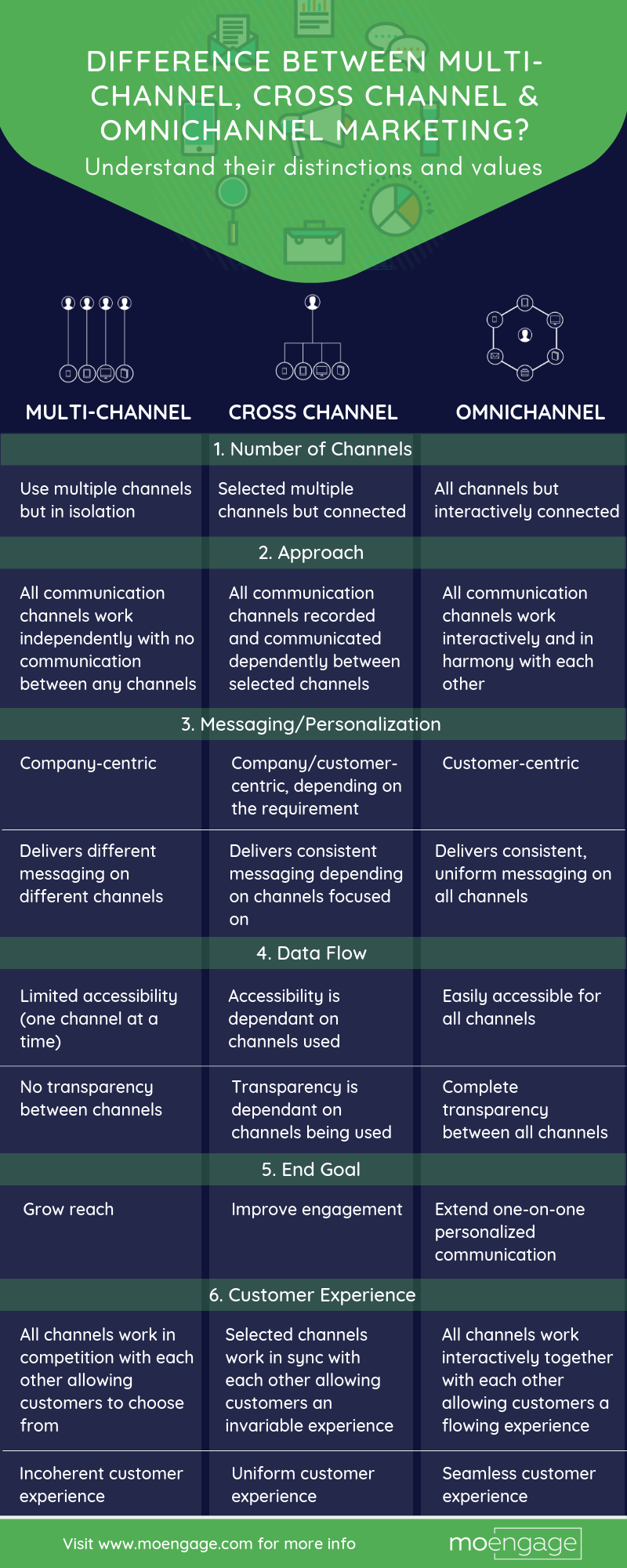[INFOGRAPHIC] 6 Differences between Multi Channel, Cross Channel and Omnichannel Marketing
![[INFOGRAPHIC] 6 Differences between Multi Channel, Cross Channel and Omnichannel Marketing](https://www.moengage.com/wp-content/uploads/2019/05/know-the-difference-between-omnichannel-marketing.png)
Reading Time: 2 minutes
The world has moved away from computers, TV, and retail stores to laptops, cellphones, and online shopping; no wonder the marketing norms have also evolved. Omnipresent customers looking for omnichannel marketing! Back in the day, users would go to look at one medium to shop, but now they have multiple mediums to buy a single item.
More than 50% of consumers look at a brand’s mobile app while shopping in their retail store. This clearly shows that technology has definitely evolved the way we buy. Obviously, this directly impacted the way marketers communicate with the consumers too. There is no one-point marketing anymore, and even with multiple-channel marketing, there are no silos between those channels. With consumers growing smarter by the day and touching upon every channel before making a purchasing decision, marketers need to up their game as well.
No one is thinking of having a physical store experience, desktop experience, mobile experience, and all that working in isolation. But having a more holistic experience while using a multi-channel approach—offline and online. This approach is termed ‘omnichannel marketing’—the current marketing buzzword.
However, many marketers are still trying to come clean with a clear defining bifurcation between what is cross-channel, multi-channel, and omnichannel marketing. This is not because all of them are same-same but different, but all three of them have thin lines differentiating their core values and practicality.
The below infographic will dive into the differences between these three marketing holds.

Having a clear picture of the channels being used, and the basis of which strategizing your marketing is the gameplay every marketer should be thriving for. Also, there was a time when using the multi channel, or even cross channel, the strategy would have worked. However, with the customers getting smarter by the day and having an omnipresence, it only gets crucial for the companies to be omnipresent as well.
| Download Ebook – A Beginner’s Guide to Omnichannel Marketing using Marketing Automation
Access the Omnichannel Workflows Ebook – Ready-to-Use Omnichannel Marketing Workflows To Grow Conversions |
Some of the top brands have been in the top because of the way they engage with their customers, and most of them use the omnichannel experience to get there. These companies have even seen a boost in their customer engagement or a 10% increase in sales. Typically, employing omnichannel marketing is not that hard a task if the essential components such as channels used, user journey and marketing automation platform are in place. MoEngage, for example, offers Flows that allows our customers to be omnipresent by providing consistent, personalized experience throughout all channels.
| Related Stories – |








